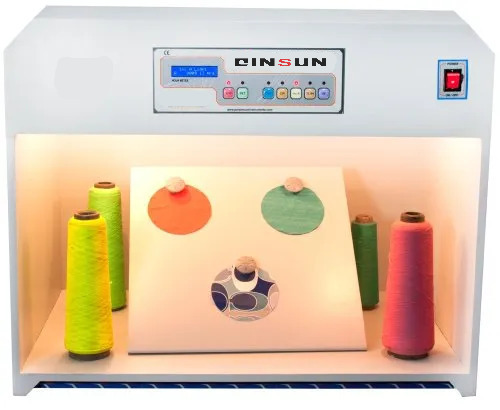What are the four colors that make up the True Colors assessment?

Light source color light box is widely used in textile, toys, printing and dyeing, plastic, paint, ink, printing, pigment, chemical industry, ceramics, shoes, leather, hardware, food, cosmetics, and other industries. Accurately check the color deviation of goods to ensure that the quality of the color of goods meets the requirements.
What are the four colors that make up the True Colors assessment?
Color assessment cabinets provide a large viewing area and are equipped with various light sources to spot metamerism. Metamerism is when samples match under a single light source.

The cabinets can provide different light sources, such as D65, TL84, CWF, UV, and F. These different light sources can reduce problems caused by natural light.
How does color matching cabinet work?
A color matching cabinet, also known as a color assessment cabinet or light booth, works by providing standardized lighting conditions for color evaluation and comparison. Here's how it generally works:
1. Lighting: The cabinet is equipped with specific light sources, typically daylight, tungsten (incandescent), and optional fluorescent or LED lights. These lights mimic different lighting conditions to simulate various environments where colors will be viewed.
2. Standardization: The color matching cabinet ensures that the lighting conditions are consistent across different evaluations and locations. This helps eliminate variations caused by different lighting environments.
3. Color assessment: By placing color samples or objects inside the cabinet, you can evaluate their colors under the standardized lighting conditions. This allows for accurate and reliable color comparison, ensuring consistent color matching and quality control.
4. Color temperature and color rendering: The cabinet's light sources have specific color temperatures and color rendering properties, which mimic different lighting conditions in real-world settings. Color temperature refers to the warmth or coolness of the light, while color rendering refers to the accuracy with which the lights reveal the true colors of the samples.
By using a color matching cabinet, you can assess colors more precisely, compare them accurately, and make informed decisions regarding color matching, quality control, and product consistency.
2023-09-13 10:31

